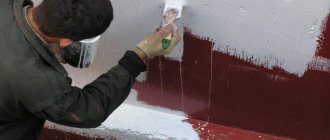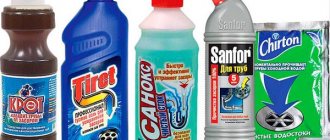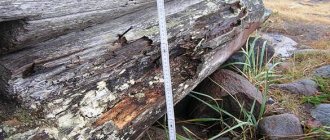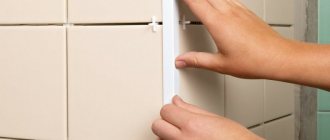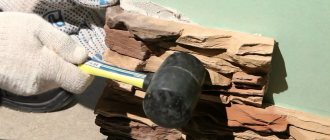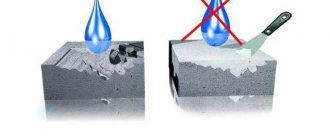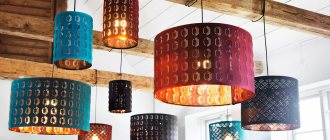For finishing the interiors of a wooden house or country house, traditional lining, which has the following attractive properties, is best suited:
- ease of installation and maintenance;
-ecological cleanliness and aesthetics;
- health benefits, as well as the opportunity to enjoy natural aromas.
In addition, the lining coating is a good heat and sound insulator, protecting the walls of the room from extraneous noise and sudden temperature changes.
At the same time, lining made from wood materials is not without its drawbacks, since it belongs to the category of flammable materials that are susceptible to moisture, mold and fungal formations.
To realize all the advantages of natural wood, special processing of the lining is required, which provides reliable protection of the cladding material from destruction, as well as increasing its visual appeal.
Types of funds
Coverings for lining are divided into two main groups: protective and finishing (decorative). The first group includes compounds that have different working functions. Some are impregnations, others are covering materials. Both of them create a barrier against negative external factors.
Impregnations suitable for lining:
- covering soil;
- stain;
- wax;
- oil;
- specialized impregnation;
- antiseptics;
- drying oil;
- bleach;
- fire retardant
Several layers of stain with and without the addition of toners look different Source elka-palka.ru
Covering finishing materials act as a decorative layer, simultaneously serving as both protection and decoration. When there is no desire to cover up the wood pattern and its color, the coating composition is chosen from among the following translucent options:
- glossy or matte clear varnishes;
- tinted clear varnishes;
- translucent varnishes;
- wax;
- aqualak on acrylic;
- translucent enamel;
- decorative azure.
Brushed lining is coated with water-soluble transparent varnish Source 1povagonke.ru
For other cases in which the natural color, texture and pattern of the board are unimportant, the lining inside the house is treated using covering materials. These include:
- acrylate, acrylic paints;
- oil paints;
- water-based paints.
Painting new lining with acrylic paint - the first layer of light green color Source sparta-stroy.ru
Wax belongs to the group of coating materials and impregnations. It all depends on the technology and the thickness of the applied layer. The degree of gloss of the coating depends on the duration and technique of polishing during waxing. In this case, wax can be called a coating material. The longer the procedure is carried out, the more the working wax surface approaches gloss. The less and less intensive grinding is done, the more the matte structure of the wax coating is preserved.
Manufacturers of wood treatment products
Not all products on the market are of the highest quality. But there are a number of manufacturers who have been receiving positive recommendations from consumers for several years. Among the many offers on the market, the following brands of varnishes and wood paints stand out:
- Finncolor (Russia). Acrylate gloss and semi-gloss varnishes are easy to dilute with water while working. Pigments can be added to them. They are great for covering ceilings, walls, niches, door openings, and windows. Not for use on floors or furniture. The main function of protection is to stop the natural destruction of wood, to create a barrier when dirt, moisture, and harmful microorganisms (mold, mildew) get on the surface. Average costs - 1 liter per area of 5-12 square meters. m. Blend – 9 l. Approximate price – 2000 rubles.
- Composite (Russia). A quick-drying varnish without color or pungent odor is suitable for walls, ceilings, wood materials such as lining, non-laminated chipboard, fibreboard, OSB and MDF. One liter of product will cover an area of 8-12 square meters. m. Price for 1-3 liters – from 300 rubles, 10 liters – 2200 rubles.
- Commander (Finland). Varnishes with a ready-made coating of varying degrees of gloss. They are environmentally friendly, do not have a sharp specific odor, and can be used in children's rooms. The layer of varnish on the lining easily repels dirt and water and does not absorb fats. Consumption – 1 liter per 8-12 square meters. m. Small containers of 0.9 liters priced from 350 rubles. Medium (2.7 l) and large (9 l), respectively, cost more.
- Eurotex (Russia). The “Sauna” modifier is an ideal solution for rooms with high humidity. The product is used for bathrooms lined with lining, kitchens, baths, saunas. The composition contains wax, densely distributed over the surface, capable of withstanding high temperatures and humidity. The average price for 2.5 liters is 500 rubles.
- Colorex (Sweden). “Panellac” is an excellent primer for processing lining from new boards and an ideal finishing coat for already finished euro lining. Can be used on walls, ceilings and even furniture. Well protects wood from discoloration and aging, scratches due to mechanical stress. It has a hardening effect on wood. For 8-14 sq. m. only 1 liter is spent. Cost for 0.9 l - 750 rubles, 2.7 l - 1800 rubles, 9 l - 5000 rubles. “Supisauna” is an effective matte varnish for rooms with high humidity. Protects the lining from rot and darkening. Prices - 600-4000 rubles, depending on the volume of displacement.
- Belinka (Slovenia). Due to the fact that there are no biocides in the composition, the paint can be used inside the house. Thin-layer and colorless coatings are suitable for wood. They only give a matte shine. Very economical consumption - for 3 layers of 10-12 sq. m. area is enough for 1 liter. The approximate cost for 1-2.5 liters is from 600 rubles.
- Pinotex (Estonia). The “Interior” collection was released specifically for treating surfaces inside the house. The impregnation is a transparent, odorless liquid that is easily distributed over the surface of the lining. Composition: alkyd resin, light-resistant pigments, water. Blend volumes – 1.3-10 l. Costs on average are 1 liter per 8-16 square meters. m. Price – from 650 rub.
Translucent varnish “Commander” Source ales-spb.ru
Belinka brightening varnish is applied in one layer over untreated lining Source bsm21.ru
Varnishes and paints are applied with a brush and a roller made of a fur coat. On large areas, the lining is processed using special pneumatic devices - spray guns. They allow you to distribute the product evenly by spraying.
Consumption! The amount of material spent depends on the quality of the board, the number of layers, as well as the primary processing. The very first layer will be absorbed fastest and most deeply. If the structure of the wood is too “porous”, then the varnish or paint on the first layer goes deep into the microspace between the fibers.
Recommendations on how to choose the right covering material
If you cover the lining with regular paint or varnish, this will cause the board to rot. Such destruction is associated with low vapor permeability and air permeability of the finished coating. For wood, special materials are used that can “breathe”, not retain moisture inside, but repel it.
Processing lining with oil varnish Source roomester.ru
Expert advice on the best way to treat lining inside a house:
- The product must be odorless and not contain toxic substances that can emit harmful fumes during operation.
- The best water-based varnishes.
- For lining inside steam rooms of baths or saunas, it is necessary to select special protective equipment that can withstand high temperatures of air or steam.
- Alkyd varnishes are more expensive than water-soluble ones. It is better to restore damaged areas with alkyd varnishes or use them outside the house.
- If you use a translucent finishing coat (paint), it is better to treat the lining with it in the summer, when it is possible to ventilate the room well due to the persistent pungent odor of such paint.
- If the primer has already been finished with something previously, then updating with a protective layer needs to be done only with a composition that will be compatible with the existing coating.
- Under staining, the board must be perfectly smooth and even.
Water-soluble varnishes are environmentally friendly, odorless, do not cause allergic reactions, and do not harm the respiratory system. Despite the fact that in a liquid state they are easily diluted with water, they create a super-durable hard coating once completely hardened.
Antiseptic coating for any type of wood - protection against fungus and mold Source taburetka96.ru
Question answer
What wood impregnation can be used in the bedroom?
It all depends on what protective properties you want to achieve. For the bedroom, you can use water- or oil-based impregnations. They are completely safe for health. In addition, oil solutions have good decorative properties.
How do you know when it’s time to update your impregnation?
This can be understood by the appearance of the surface: the protective film will begin to crack, peel, and move away from the base. In addition, each can of impregnation indicates its protection period.
How to apply impregnation to the surface?
It all depends on the type of impregnation and its composition. In most cases, solutions can be applied with a regular brush, spray gun or roller. The exception is salt impregnations. The product must be soaked in them.
Can impregnations for outdoor use be used indoors?
In most cases, impregnations for outdoor use have a more aggressive composition and toxicity. The use of such solutions inside residential premises is unacceptable. However, you can choose a universal composition that is suitable for use both inside and outside the home.
What types of wood products can be treated with impregnations?
Impregnations can be used to protect any wooden surfaces: walls, ceilings, railings, furniture, picture frames, etc.
Reasons why lining should be processed
The pleasant color of untreated lining will not please the eye for long. The wood will begin to deteriorate during use inside the house. Before you look for how to process the lining, you need to understand the reasons why it loses its beautiful appearance. Wood can be affected by dampness, attack by pests and, finally, even the simplest grease stains and abrasions.
Several main reasons why lining needs treatment with protective agents:
- Waterproofing. Boards become more resistant to water if there is high humidity in the room.
- Antiseptic. Fungal spores and mold microorganisms will not be able to get into the very depths of microcracks in the fibrous structure of the tree.
- Barrier against pests. No bark beetle (wood borer) or any other insect pest can destroy the wooden covering.
- Color preservation. The treated lining does not darken over time and retains its natural color throughout its entire service life.
- Health safety. If the lining is made of coniferous wood, then the release of their resins from the board stops after it is treated with protection. This nuance is important for rooms where people sleep or stay most often.
- Fire safety. The high flammability of wood can be reduced if it is treated with fire retardants in several layers.
Impregnation ensures the brightness and preservation of the color of the lining Source winterhouse.ru
Treating the surface of wood with a fire retardant to protect it from fire Source sigma01.ru
The tree will retain its integrity longer in conditions of high humidity because the protective layer of impregnation or covering material will prevent it from swelling and rotting. When attacked by small insects, a layer of protection will prevent the wood from turning into dust. If a protective layer of impregnation is periodically applied to the surface of unpainted lining, then it will become stained and retain all its design properties - color, texture of smooth curves, pattern of wood stains.
Why is impregnation needed?
Impregnation for lining does not seem to everyone to be a mandatory step on a balcony, bathhouse, house or other structure when it was used from the inside. However, if the boards are not processed, then after a short time defects will appear on their basis.
If the ventilation in the room is poor, then a blue discoloration will form on the surface; if the coating is constantly exposed to ultraviolet radiation, the color will turn into a dark gray shade.
The blue stain is acquired from microorganisms and can be removed using chlorine, which leaves a white coating, but the process is not easy and the product emits a strong odor. The grayishness can be removed by sanding the base, but reappearance is inevitable.
By impregnating the base, you can give the lining a more pleasant design; if moisture-resistant products are used, the material will last a long time even in a room that is not heated, when the dampness is high.
If the boards are not processed, then after a short time defects will appear on their basis.


